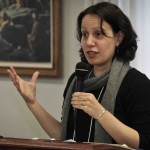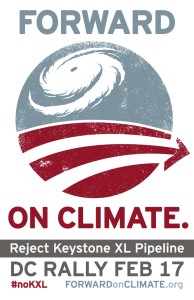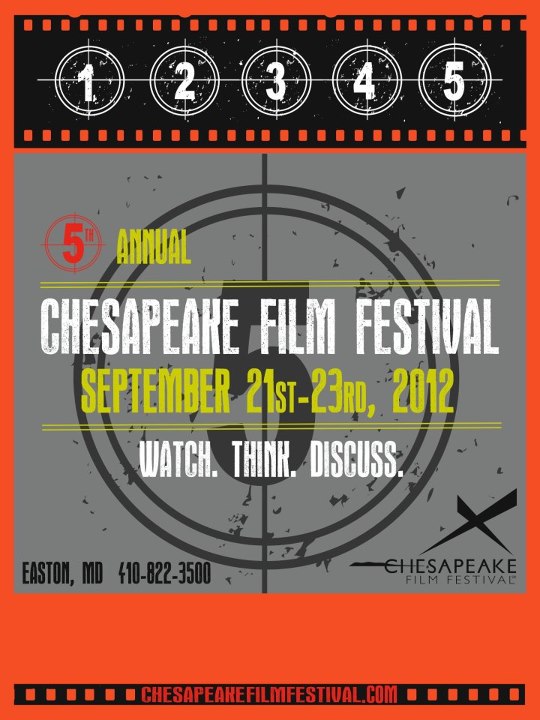The following is the first (of hopefully many) guest posts! We see our blog as a platform for exploring ideas and are excited to share this space with our grantees. If you are interested in submitting a blog, please contact our Program Assistant, Megan Milliken at mmilliken@towncreekfdn.org
We would like to mention that the views of the guest blog do not speak on behalf of the Town Creek Foundation.
A Modest Proposal: Three New Year’s Resolutions for Our Organizations
An invitation to pursue our green ends through slightly greener means.
“Why do you look at the speck of sawdust in your brother’s eye
and pay no attention to the plank in your own?” Luke 6:41
I am standing in line outside the EPA on a weekday morning, waiting with dozens of environmental advocates to go in and testify on behalf of the first-ever federal limits on carbon pollution. All down the long line, in almost every hand, is a single-use disposable coffee cup. Inside the hearing room, four earnest EPA employees receive our testimony, from behind a row of plastic water bottles and disposable cups. At a press conference organized that afternoon by a major environmental organization, volunteers pick up box lunches provided by the organization, many with ham and beef sandwiches.
A group of national environmental groups trying to stop the Keystone XL pipeline gathers for a meeting at a table (strewn, again, with disposable cups), and plan a “fly-in” of people from across the country to testify against the pipeline.
There is a row of disposable cups, too, at the opening panel at a state governor’s climate conference, in front of a panel including a climate activist, a scientist, and the governor himself. For lunch, attendees are treated to a lunch including bacon-wrapped meatloaf.
Does any of this matter?
Of course, we know disposable cutlery and bottled water produce garbage and disinvest the public from public water sources. We know eating lower on the food chain reduces our carbon footprint, and that air travel and other fossil-fueled transit is warming the climate.
But our organizations have so much work to do and so few people to do it in such a short time. We just try to get our work done as cheaply and conveniently as possible, and tell ourselves that our organizations’ direct day-to-day contribution to environmental problems is small.
In any case, the work we are doing is so much more important.
As a climate activist in the nation’s capital, I have been honored to participate in coalitions of strategic, passionate environmental activists who are doing critical work on national and state-wide challenges. Being part of that work is an honor, and its real and lasting consequences for our environment far exceed the environmental impact of the garbage we generated, the food we ate, or the flights we took while doing it. Even when we fly in people to speak out against the Keystone pipeline, and feed them red meat on disposable dishes, we’re doing far, far more good for our climate than harm.
But as a climate activist who works with religious communities, I’ve concluded that, in 2014, I want us to be reflective not only about the good work we are doing, but about how we are doing it.
All spiritual traditions invite us to bring our hearts and personal behavior into alignment with our highest purposes. Wisdom from our Christian neighbors invites us to stop ignoring the “plank” in our own eyes.
The congregations I work with aren’t choosing between greening their facilities and taking action, between serving fair trade organic coffee in reusable mugs at fellowship hour, on the one hand, or speaking out in local clean energy campaigns on the other. They are doing both; one is a spiritual practice that deepens and reinforces their commitment to the other.
What might our environmental organizations have to gain if we took their example this year?
All of our groups, in one way or another, are asking people to imagine a more sustainable world in which they will live differently. And people weren’t just irked by hypocricy in the time of the Gospels; they continue to by hyper-sensitive to perceived hypocricy by those who are asking them to change. If our organizations imply that it’s too much trouble for us to even try to bring our own mugs or wash our dishes, it compromises our credibility when we ask the public to be open to make changes with the environment in mind.
And greener choices will enhance the impact that our organizations have in the world. In almost every category of organizational purchasing and operations, there are green alternatives and wonderful green businesses offering to sell them. Any one environmental organization’s purchasing decisions are small, but they are decisions made about donated funds that were given to advance the environmental mission of our groups. When we spend organizational funds on greener products and services, we’re extending the reach of our donors’ dollars by having them do green work twice: once in the programming we spend them on, and again in the greener vendors with whom we spent them.
We have a lot of other (important!) things to do in 2014. We’re not all going to be able to make sustainability a core value in all of our organizations’ purchasing and practices tomorrow.
So I want to offer three ideas.
Just three. Below, I’m proposing three straightforward ways every environmental organization, including mine, can “green” our practices in 2014, regardless of how much energy or staff time we have to commit to more substantive changes:
1. Avoid bottled water. Minimize disposables. (Especially on panels!)
There are many ways to reduce waste in our organizations, but if you have to pick just one, ditch plastic water bottles. Single use plastic water bottles contain water that isn’t any cleaner or safer than tap water, creates mountains of plastic garbage, costs thousands of times more than tap water, and accelerates corporate privatization of public resources. (Click here for more information)
Many environmental organizations organize panels with speakers, and then stock the panel table with plastic water bottles. The result is that every photo and every video made of the presentation conveys not only the environmental message the speakers wish to send, but also models using plastic water bottles to everyone who is listening.
If it feels daunting to eliminate plastic water bottles from an entire conference or other large event, start with speakers and panels. It would be a small but meaningful step if every environmental organization decided, starting now, that any panels they organize will provide cups and a pitcher of tap water to their speakers in this highly visible forum, so the important environmental messages we’re trying to convey will not be compromised by plastic garbage.
Given a little advance planning, many organizations can shift away from disposables to reusable dishes in the office as well, by stocking the cupboard with a set of mugs and plates. (PreserveProducts.com are a great source of affordable reusables tableware.) Many of our colleagues may have extra mugs, cutlery, or cloth napkins at home to donate to the cause, or we can assemble a previously-loved set at a second-hand store. And if someone at work already has a home compost bin, then establishing a bin in the workplace that they take home can be a way of reducing food waste from our organizations.
But for now, if we’re planning a panel, let’s put a pitcher filled with tap water and four reusable cups on the table.
2. Treating folks to lunch? Order vegetarian.
There are so many ways to improve the environmental impact of our food choices, and people can be very sensitive about being told what to eat. But our organizations frequently provide free meals to staff, or meeting attendees, or groups of volunteers. And an easy way to reduce the climate impact of the food our organizations purchase — by nearly a third (28.7%) — is simply to leave meat off the menu.
Our organizations could take this much further, of course: we could strive to choose food that is organic and local; to select fair-trade certified items; and even to minimize animal products like eggs or dairy (a vegan meal has a 41.7% lower climate footprint).
But this second resolution doesn’t ask anyone in our offices to learn a lot about food sourcing, or even to work with a different restaurant or caterer. It just requires an organizational policy that food paid for by the organization doesn’t include meat or fish. Planning the menu for a conference? Ask the caterer about vegetarian menus. Ordering pizza for phonebankers? Leave off the pepperoni. Even people who do eat meat themselves are unlikely to complain if they’re being treated to a delicious meal that happens to be vegetarian. They might not even notice!
3. Booking flights? Buy carbon offsets.
By far, the thing most of our organizations do that has the single greatest direct carbon footprint is paying for air travel, for our employees or our volunteers. Many times, there simply is no other practical way to get people where they need to go to advance our environmental work in the time available for them to do so. But I invite all environmental organizations to commit to making some kind of financial recognition of the climate impact of the plane travel they are purchasing.
If every environmental organization paid, say, $12 a ton to offset the climate impact of air travel, it would provide a slight financial incentive for the organization to consider alternatives for short trips, and, even if the organization did just as much flying people around, such a policy would direct a stream of funds to clean energy projects in proportion to our air travel.
Our organizations can do our own research into offset organizations that are reputable and certified, and whose carbon-reducing projects are most aligned with our missions. (I personally offset my travel with Native Energy).
This resolution, too, doesn’t ask our organizations to do anything all that differently, for now. But it would be significant for every environmental organization to begin taking an accounting, as a matter of policy, of the climate impact of our air travel. There are many calculators online, one of which is here.
May 2014 be the year we achieve our green ends through slightly greener means.
Maybe your organization already does some of these things; maybe you have some ideas to add to the list (please do so below!)
It’s the right thing to do, it will align our hearts with our work, it will enhance our credibility, it will extend our donors’ impact, and none of these three suggestions are hard or expensive. Over time, it might lead to even more, but in any case, it’s a worthwhile place to start.
It’s a brand new year, folks! We’ve got a planet to protect, and a plank in our eye. Let’s do this.

Joelle Novey is the director of Interfaith Power & Light (DC.MD.NoVA), which works alongside dozens of fellow environmental organizations in the Maryland Climate Coalition, DC Environmental Network, the Maryland Citizens’ Campaign for the Environment, and the Virginia Climate Action Campaign.
 Rebecca Ruggles is Director of the Maryland Environmental Health Network. She was formerly Director of Special Projects at Baltimore Medical System (BMS), a community health system serving Baltimore City and Baltimore County. Rebecca consults to the Association of Baltimore Area Grantmakers as the coordinator of the Green Funders affinity group. She sits on the Board of Interfaith Partners for the Chesapeake (formerly Chesapeake Covenant Community), a network of congregations and people of faith pursuing better stewardship of our natural world. She is a member of the Health Care Sustainability Leadership Council and an active member of the Greater Baltimore Asthma Alliance.
Rebecca Ruggles is Director of the Maryland Environmental Health Network. She was formerly Director of Special Projects at Baltimore Medical System (BMS), a community health system serving Baltimore City and Baltimore County. Rebecca consults to the Association of Baltimore Area Grantmakers as the coordinator of the Green Funders affinity group. She sits on the Board of Interfaith Partners for the Chesapeake (formerly Chesapeake Covenant Community), a network of congregations and people of faith pursuing better stewardship of our natural world. She is a member of the Health Care Sustainability Leadership Council and an active member of the Greater Baltimore Asthma Alliance.

